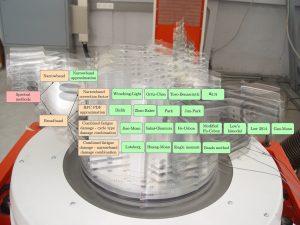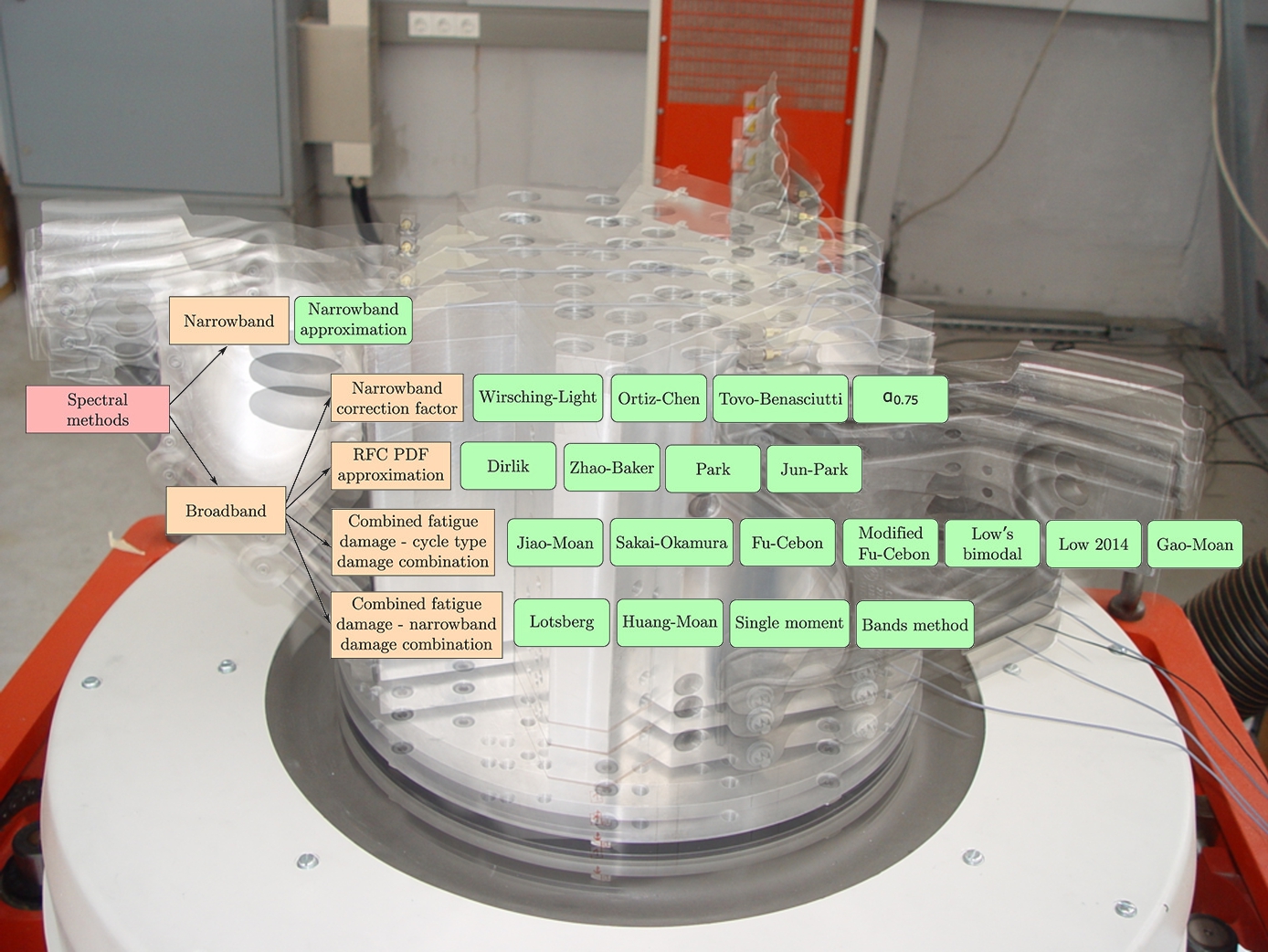Researchers from the Faculty of Mechanical Engineering of the University of Ljubljana have published original scientific articles in a leading scientific journal on the subject of various methods of evaluating damage vibrations in the frequency domain. The scientific contribution lies in the fact that the authors managed to collect most of the published methods and present them within the framework of a unified theory; all presented methods were also numerically compared.
Vibration fatigue by spectral methods relates the theory of structural dynamics to high-cycle vibration fatigue. An ideal spectral method should perform well and consistently, regardless of the response spectrum and the material being analyzed. The primary aim of this review is to develop a common theoretical and open-source-code framework for a side-by-side comparison of more than 20 spectral methods, which will help a future spectral-domain vibration-fatigue research. The reviewed spectral methods are structured in terms of the damage-estimation concept: narrowband approximation, narrowband correction factor (Wirsching–Light, Ortiz–Chen, alpha0.75 , Tovo–Benasciutti (two versions)), rainflow probability-density-function approximation (Dirlik, Zhao–Baker, Park, Jun–Park) and combined fatigue damage, where the damage is combined according to the cycle types (Jiao–Moan, Sakai–Okamura, Fu–Cebon, modified Fu–Cebon, Low’s bimodal, Low 2014, Gao–Moan) and the narrowband damage combination criterion (Lotsberg, Huang–Moan, single moment, bands method). All the reviewed methods are implemented in the supporting open-source Python package FLife, with the comparison being fully reproducible using the package documentation. The accuracy of the spectral methods is investigated in terms of a time-domain rainflow analysis, where three different materials are considered: steel, aluminium and spring steel. The comparison is based on typical PSD defined signals, with the focus on: spectral width, background noise, close modes, number of modes and typical vibration profiles used in accelerated automotive tests. In addition, a bimodal spectrum is formulated to examine a specific group of spectral methods that are developed for bimodal random processes. This research shows that other methods, besides the well-established ones, such as the Dirlik and Tovo-Benasciutti methods, should be considered when the fatigue load is broadband: Ortiz–Chen, alpha0.75 , Park, Jun–Park and Huang–Moan methods. Furthermore, as the fatigue analysis of bimodal random processes has become well established, the applicability of bimodal methods is inspected. Among the reviewed spectral methods, Low’s bimodal and Low 2014 method show exceptional accuracy that can be attained using the bimodal formulation.

Link to the article: https://doi.org/10.1016/j.ymssp.2023.110149.
